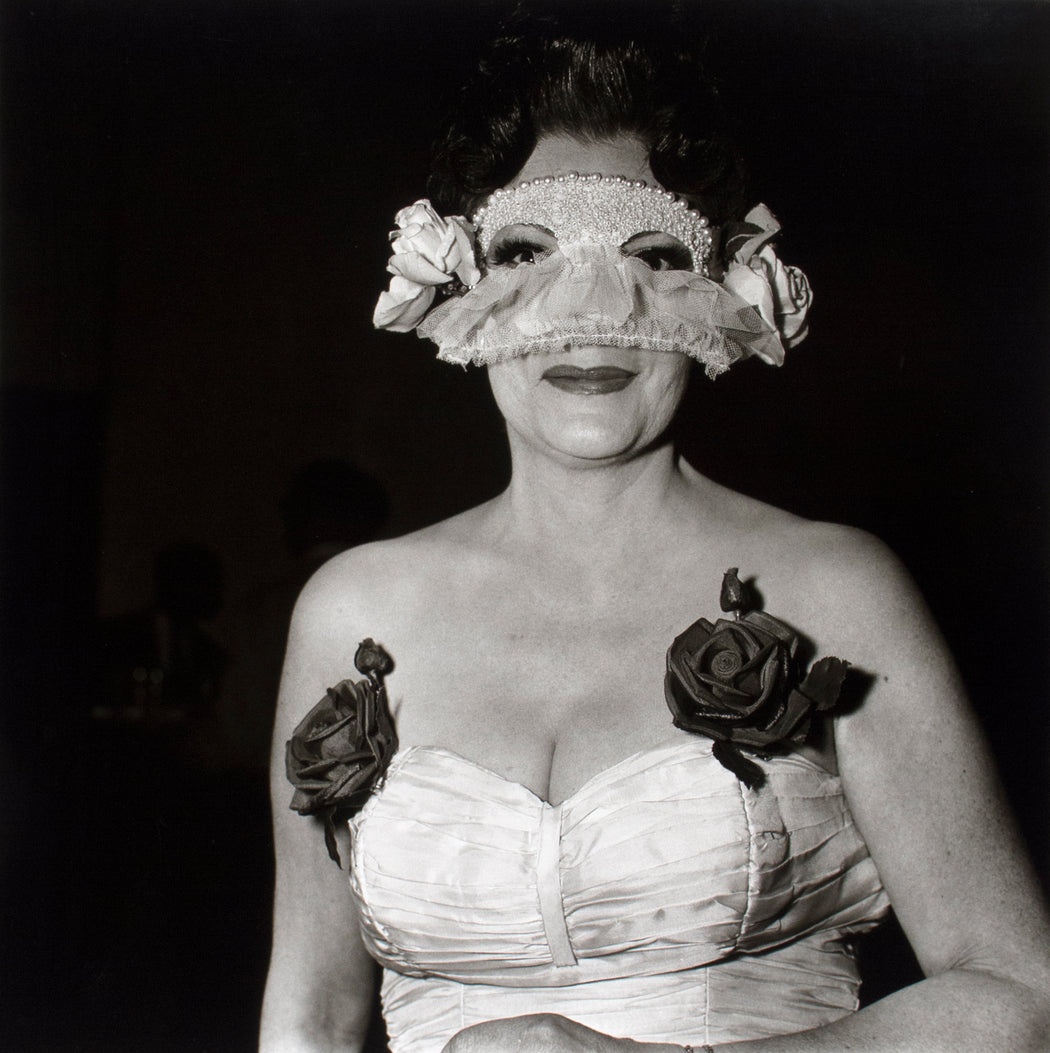

Diane Arbus
Lady at a masked ball with two roses on her dress, NYC, by Diane Arbus
 Toronto, ON)
Toronto, ON)
Learn about our Shipping & Returns policy.
Have a question? Read our FAQ.
- Artwork Info
- About the Artist
-
1967
Signed, titled, and dated, by Doon Arbus, Executor, with artist stamp, in ink, au verso
Printed circa 1977
Gelatin silver print -
Diane Arbus (1924-1971) was born in New York City, where she studied at the Ethical Culture School. Working with her photographer husband Alan Arbus as a stylist on fashion assignments, she developed an interest in photography that led her to take classes with Lisette Model from 1955 to 1957. Model encouraged her to pursue her own projects, and in 1961, Arbus published her photographs for the first time, in a Harper's Bazaar feature entitled "Portraits of Eccentrics," which began her successful career. Her work appeared in Esquire, Show, The New York Times Magazine, and many other publications, attracting attention very quickly. Arbus won Guggenheim grants in 1963 and 1966 and was included in John Szarkowski's important New Documents exhibition at the Museum of Modern Art in 1967, grouped with Lee Friedlander and Garry Winogrand as a documentarian of the "social landscape." She taught at Parsons School of Design, Cooper Union, and Rhode Island School of Design. Her work was shown posthumously at the 1972 Venice Biennale, the first time an American photographer was represented at that event; the Museum of Modern Art held a retrospective of her work the same year.
Arbus's photographs possess a disarming psychological frankness. Her subjects were often odd-looking characters on the margins of society or "ordinary" people whose normalcy was made strange by Arbus's camera. Because she used a flash and held her camera directly opposite the faces of her subjects as they looked into the camera, her photographs often appear confrontational. Her personal work is thus considered by some to be exploitative, and it has been the subject of controversy. Nevertheless, Arbus's often sensitive photographs continue to influence the development of contemporary photography.
International Center of Photography


